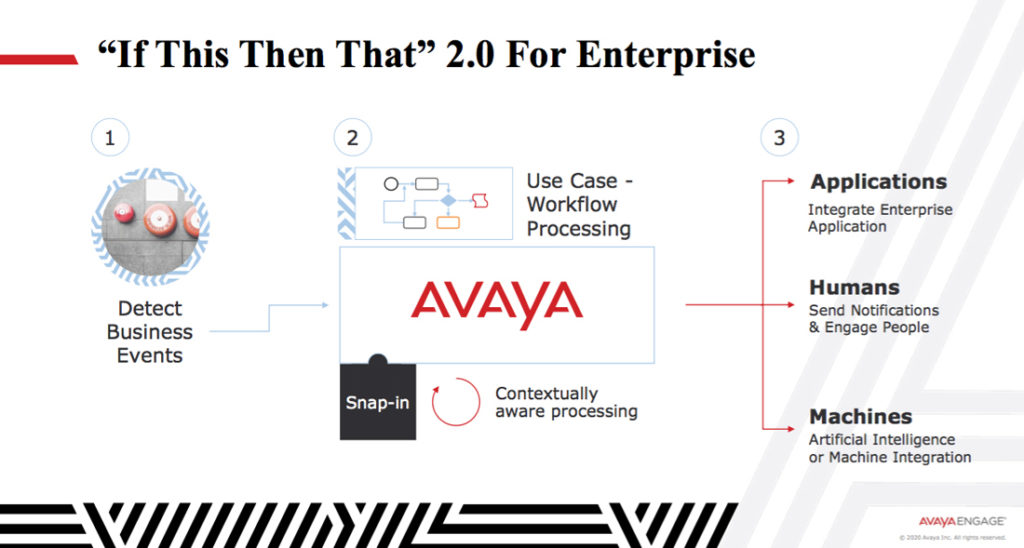Today there are billions of sensors, wearables and other devices around the world feeding data into the Internet of Things (IoT). It’s a vast digital infrastructure with numerous potential benefits to enterprises, improving internal processes, reducing waste and delivering a better experience for customers and employees.
“IoT is a disruptive technology that covers all verticals,” said Thomas Roemer, Avaya’s corporate solutions technologist director, at an Avaya ENGAGE 2020 session, “Avaya’s IOT Solution Demystified.”
In his talk, Roemer said Avaya is extending the IoT ecosystem to help IT professionals identify the most important data, develop use cases and turn that information into action. “Too often data is collected, but kept in a silo,” he said. “The biggest challenge related to the IoT is connecting the data to the right resources, so that we can apply human understanding, make decisions and take action,” he said.
Roemer said IT professionals can take a “smart” approach to using IoT data by bringing that information into Avaya Engagement Designer, a browser-based tool for workflow design and automation. It allows IT developers with minimal programming experience to quickly create applications and integrate them into IoT, artificial intelligence (AI) and line of business applications. “You can visually model, tailor and customize workflows,” Roemer said.

Calling this approach an “If this, then that 2.0 for enterprise,” Roemer said the process begins with detecting business events and continues with workflow processing and real-world business applications. You can start a workflow with voice and then add digital content, such as IVR or CRM screen pops. Or you could start the process digitally and bring in consumer voice channels. “In a contact center setting, the devices can deliver information to the agent at the right time to make decisions,” he said.
Some of the most valuable use cases for smart IoT solutions involve the healthcare sector, which is now facing the myriad challenges from the COVID-19 coronavirus. For example, sensors could be attached to a hospitalized patient to alert the care team to a breathing problem or an irregular heartbeat. That signal could trigger an automated or human response, such as waking up the patient, slowing an IV infusion or responding to a respiratory emergency.
There are countless other use cases in the business world, such as IoT sensors that signal when maintenance is needed on a commercial truck or alert a livestock producer to an animal’s illness-related rise in temperature. Similar processes can be applied in the consumer sector, where a device on a refrigerator or freezer could signal a malfunction, triggering an alert to the service center and a call, text or email to the consumer. “In the past, customers would call in to request a repair,” Roemer said. “Now a sensor can do the same thing, saving time and potentially delivering a better experience.”
Other benefits of combining IoT data with a smart platform include gaining business insights from patterns in customer behaviors. That could lead to the development of new products, changes in service contracts, or the launch of new digital sales channels.
“Avaya is making stupid things smart,” said Roemer. “We enable IoT ecosystems to communicate with any user or device with the right information, in the right place at the right time.”

Thanks for the sensible critique. Me & my neighbor were just preparing to do a little research on this. We got a grab a book from our area library but I think I learned more from this post. I am very glad to see such fantastic info being shared freely out there.